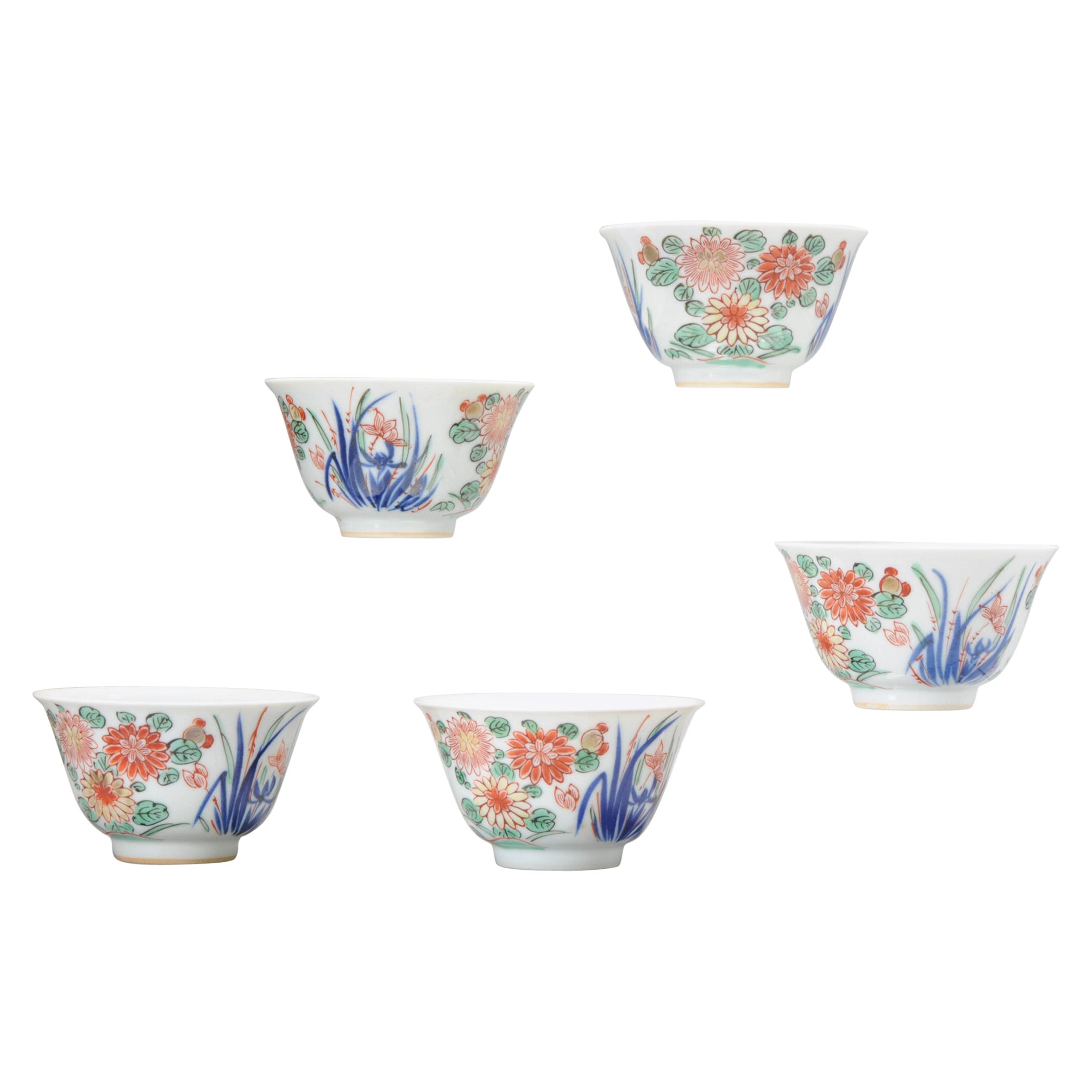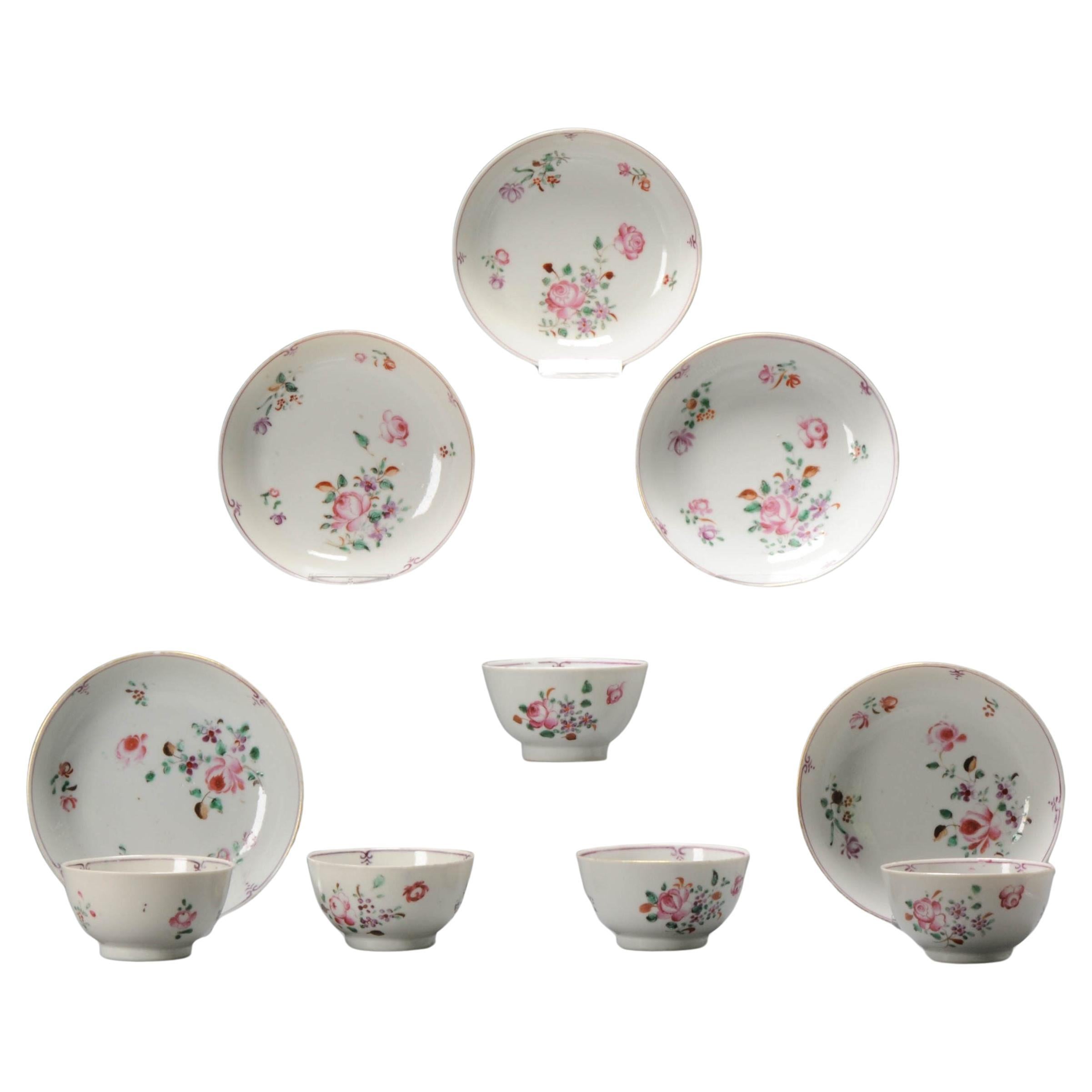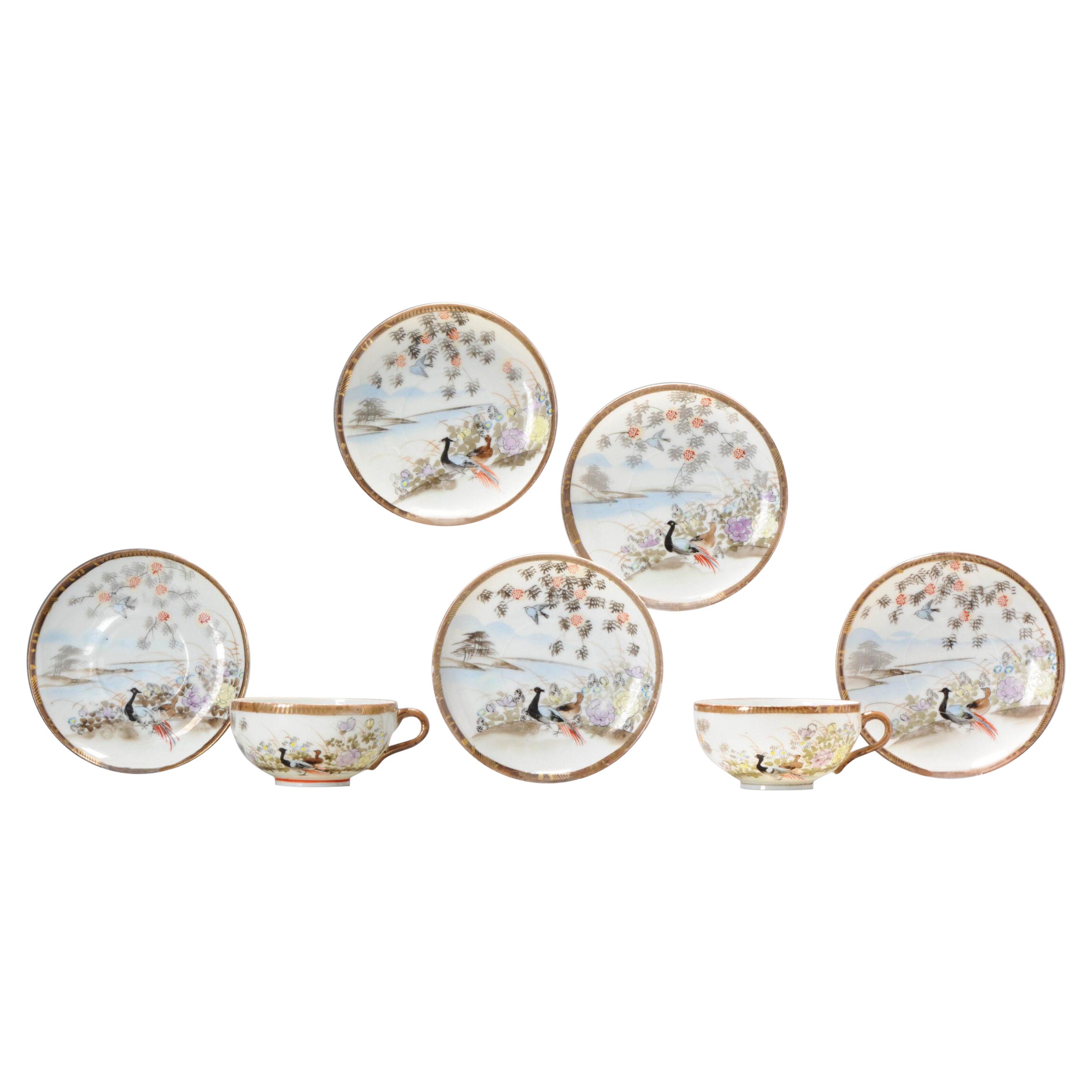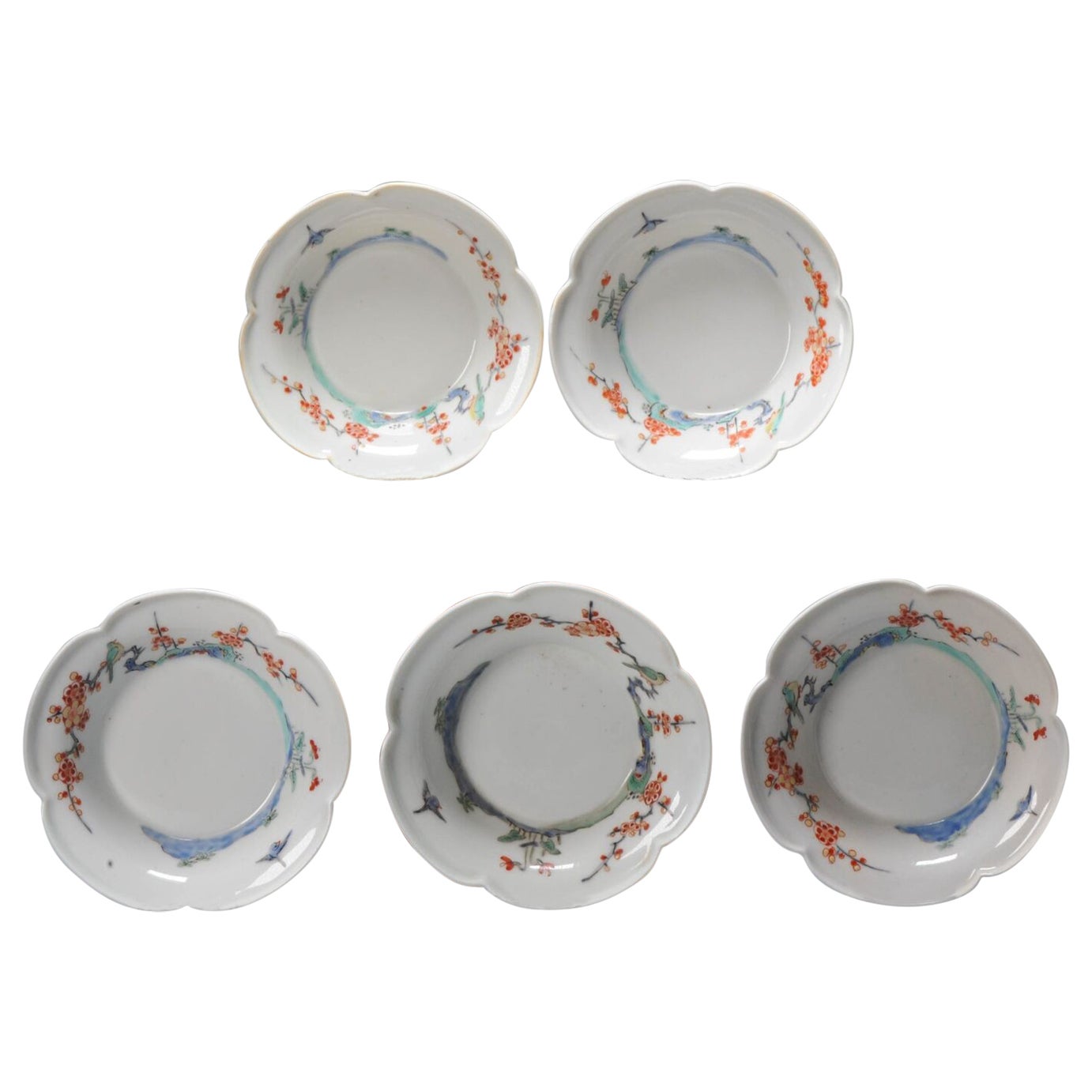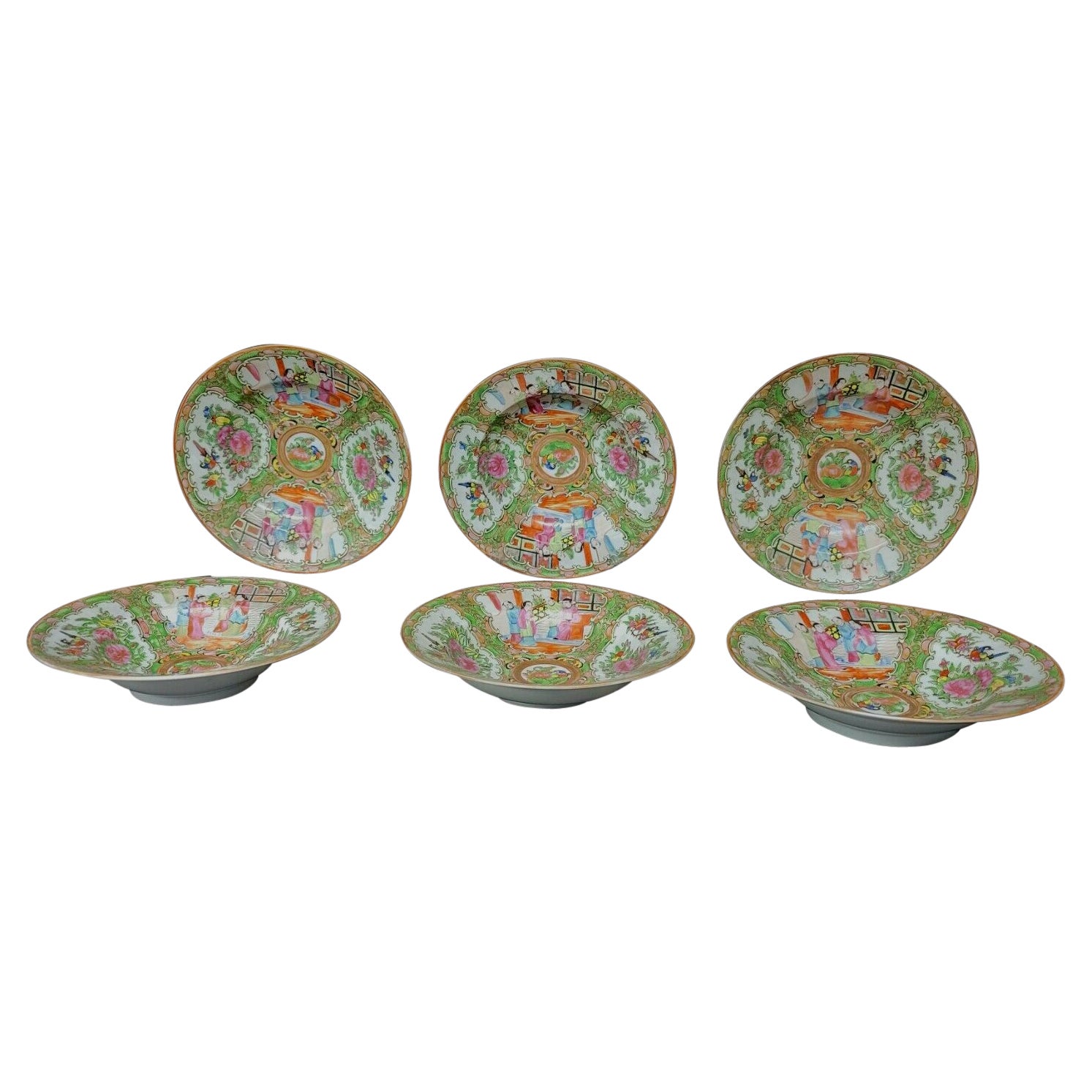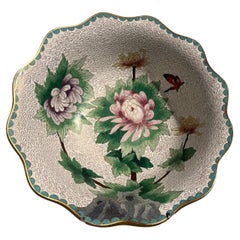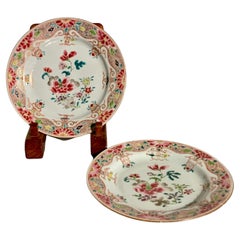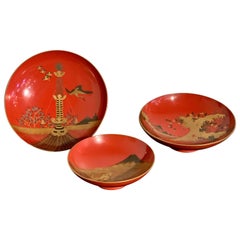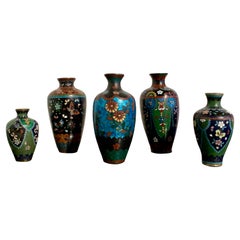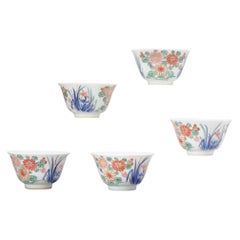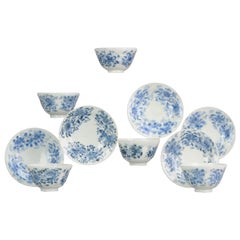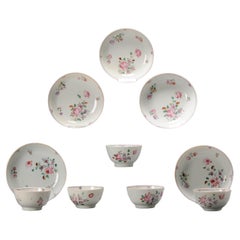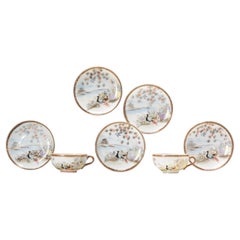Items Similar to Six Kinkozan Bowls with Birds and Flowers of the Months, Meiji Period, Japan
Want more images or videos?
Request additional images or videos from the seller
1 of 18
Six Kinkozan Bowls with Birds and Flowers of the Months, Meiji Period, Japan
$5,700per set
£4,384.82per set
€5,089.53per set
CA$8,038.36per set
A$9,004.32per set
CHF 4,729.39per set
MX$109,489.59per set
NOK 59,889.55per set
SEK 56,851.29per set
DKK 37,985.12per set
About the Item
A very fine partial set of six Japanese Satsuma bowls decorated with flowers and birds of the months, signed Kinkozan, Meiji Period, circa 1900, Japan.
The set of six exquisitely painted Satsuma bowls all of fine stoneware glazed with a cream glaze, overglaze enamels, and gilding. The interior of the bowls finely painted in overglaze enamels with gilt highlights and feature various fauna and flora. The exterior of the bowls further painted with matching flora and fauna. The rims with an intricate geometric border in gilt. The underside of each bowl with a four character marking reading Kinkozan Zo (Made by Kinkozan) in gilt.
Each bowl is delicately painted with scenes of birds, flowers, and insects to represent months of the year. This partial set of six bowls are painted with the following images:
Magnolia and long tailed bird represent March.
Andromeda and songbrid for April (?).
Wisteria and songbirds represent May.
Tree peony and butterflies most likely represent June.
Chrysanthemum representing August.
Autumn leaves and grasses with quail for September (?).
- Creator:Kinkozan (Workshop/Studio)
- Dimensions:Height: 2 in (5.08 cm)Diameter: 5.25 in (13.34 cm)
- Sold As:Set of 6
- Style:Meiji (Of the Period)
- Materials and Techniques:
- Place of Origin:
- Period:1900-1909
- Date of Manufacture:circa 1900
- Condition:Wear consistent with age and use. Minor fading. In overall very nice condition. Some bowls with some wear to the painting, enamels, and/or gilding. The magnolia bowl with a very faint hairline visible under strong raking light. Not other cracks, chips, or repairs noted.
- Seller Location:Austin, TX
- Reference Number:1stDibs: LU894739297892
About the Seller
5.0
Platinum Seller
Premium sellers with a 4.7+ rating and 24-hour response times
Established in 2001
1stDibs seller since 2010
345 sales on 1stDibs
Typical response time: <1 hour
- ShippingRetrieving quote...Shipping from: Austin, TX
- Return Policy
Authenticity Guarantee
In the unlikely event there’s an issue with an item’s authenticity, contact us within 1 year for a full refund. DetailsMoney-Back Guarantee
If your item is not as described, is damaged in transit, or does not arrive, contact us within 7 days for a full refund. Details24-Hour Cancellation
You have a 24-hour grace period in which to reconsider your purchase, with no questions asked.Vetted Professional Sellers
Our world-class sellers must adhere to strict standards for service and quality, maintaining the integrity of our listings.Price-Match Guarantee
If you find that a seller listed the same item for a lower price elsewhere, we’ll match it.Trusted Global Delivery
Our best-in-class carrier network provides specialized shipping options worldwide, including custom delivery.More From This Seller
View AllLarge Vintage Chinese Cloisonne Scalloped Rim Bowl, circa 1950's, China
Located in Austin, TX
A large and attractive vintage Chinese white ground cloisonne scalloped rimmed bowl, mid 20th century, circa 1950's, China.
The large vintage cloisonne bowl of generous proportions,...
Category
Vintage 1950s Chinese Qing Decorative Bowls
Materials
Copper, Enamel
Pair Chinese Export Yongzheng Famille Rose Plates, circa 1730, China
Located in Austin, TX
A gorgeous pair of 18th century Chinese Export porcelain plates decorated in stunning famille rose enamels, Yongzheng Period, circa 1730, China.
The small plates decorated in bright and bold famille rose enamels, with pink dominating the color palette. The center of the plates featuring large floral sprays featuring magnolia and peony blossoms among other flowering plants. The rims of the plates with alternating half blossoms of pink magnolia and pink lotus against a dense diaper ground.
Gilt painted ribbons scroll around the rim and down the cavetto, holding peaches and Daosit emblems, including castanets, a flute, a drum, and a ruyi scepter...
Category
Antique Early 18th Century Chinese Chinese Export Ceramics
Materials
Porcelain
Japanese Lacquer Sake Cups, Set of 3, Meiji Period, Early 20th Century, Japan
Located in Austin, TX
A finely decorated set of 3 red lacquer sake cups, sakazuki, featuring views of Mt. Fuji, Meiji period, circa 1900, Japan.
The lacquer sake cups, called sakazuki, of traditional p...
Category
Antique Early 1900s Japanese Meiji Lacquer
Materials
Lacquer
Group of 5 Small Japanese Cloisonne and Ginbari Vases, Early 20th Century, Japan
Located in Austin, TX
A charming group of five Japanese cloisonné and ginbari foiled vases, Meiji period, early 20th century, Japan.
The group consists of one vase with cloisonné chrysanthemum blossoms against bold and bright turquoise ginbari foil background, two similar vases of primarily black and burgundy cloisonné - one with a butterfly motif, the other with a floral motif, and two similar vases of primarily dark blue and green cloisonné, both with floral and butterfly motifs.
Turquoise ginbari vase...
Category
Early 20th Century Japanese Meiji Metalwork
Materials
Copper, Enamel, Foil, Wire
Kangxi Famille Verte Porcelain Large Dish, Qing Dynasty, 17th/18th c
Located in Austin, TX
A large and magnificent Chinese famille verte enameled porcelain large dish or charger, Qing Dynasty, Kangxi Period (1662 - 1722), circa 1700, China.
The shallow, shaped dish of fo...
Category
Antique Early 1700s Chinese Qing Ceramics
Materials
Enamel
Large Chinese Export Punchbowl with Staple Repairs, 18th Century
Located in Austin, TX
A remarkable large Chinese export blue and white punchbowl painted with a floral and brocade design, and featuring a stunning staple repair, 18th century...
Category
Antique Late 18th Century Chinese Chinese Export Decorative Bowls
Materials
Iron
You May Also Like
Set of 5 Antique Japanese Porcelain Teabowls with Flowers & Base Mark
Located in Amsterdam, Noord Holland
Sharing this very nice edo or Meiji period, set of tea bowls in Ming style
Marked at base
Arita ware, also known as Arita-yaki, has its origins in 1616, when a Korean farmer, Yi Sa...
Category
Antique 18th Century Japanese Edo Decorative Bowls
Materials
Porcelain
Set of 13 Antique Japanese Arita Flowers Porcelain Meiji Dynasty Japan, 19th Cen
Located in Amsterdam, Noord Holland
A very nice and rare set of blue and white teabowls, MARKED. Japanese in Chinese style. Top Quality
Additional information:
Material: Porcelain & Pottery
Region of Origin: Japan
Per...
Category
Antique 19th Century Japanese Decorative Bowls
Materials
Porcelain
$1,547 Sale Price / set
20% Off
Set of 5 Antique Qianlong Period Chinese Porcelain Floral Tea Bowls with Dish
Located in Amsterdam, Noord Holland
Antique Chinese Qianlong period set of cups and saucers. Fine potting and handpainting.
Additional information:
Material: Porcelain & Pottery
Decoration Type / Colour: Blue & White
...
Category
Antique 18th Century Chinese Qing Tea Sets
Materials
Porcelain
Set of Antique Japanese Meiji Teacups Bowls Flowers Figures, 19th Century
Located in Amsterdam, Noord Holland
This magnificent tea set from the Meiji period (19th century). 5 cups & 10 saucers.
Additional information:
Material: Porcelain & Pottery
Region of Origin: Japan
Period: 19th centu...
Category
Antique 19th Century Japanese Meiji Tea Sets
Materials
Porcelain
$352 Sale Price / set
20% Off
Set of 5 Antique Kaiseki Chinese Porcelain Kakiemon Style Bowls, 18/19th Century
Located in Amsterdam, Noord Holland
A very nicely decorated set of 5 Edo/Meiji, 18/19th century bowls of nice moulded shape with a lovely and typical Kakiemon style decoration of flowers, rocks and birds. Underside and...
Category
Antique 18th Century Japanese Decorative Dishes and Vide-Poche
Materials
Porcelain
$1,998 Sale Price / set
20% Off
6 Chinese Rose Medallion Porcelain Soup Bowls, 19th Century
Located in Norton, MA
19th century. A truly fine hand-painted porcelain and very unusual 6 soup bowls with a deep center part for soup.
Category
Antique 19th Century Chinese Decorative Bowls
Materials
Porcelain
More Ways To Browse
Japanese Bird Art
Bowls With Birds
Japanese Insect
Stoneware Bird
Japanese Ceramic Birds
Wisteria Art
Antique Japanese Stoneware
Ceramic Insects
Japanese Enamel Bowl
Antique Hand Painted Japanese Bowl
Quail Art
Chrysanthemum Bowl
Japanese Stoneware Bowl
Magnolia Ceramics
Antique Stoneware Bowls
Meiji Insect
Satsuma Bowl
Japanese Satsuma Bowl
